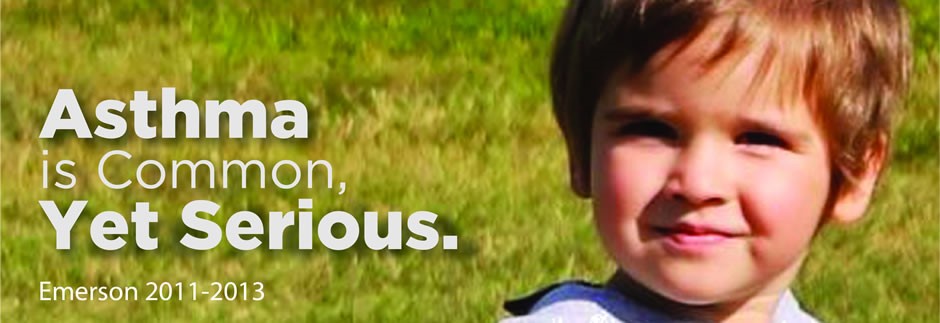Flare-Ups

Asthma is common, yet serious. Meet Emerson who had his breath taken away from asthma.
What is an Asthma Flare-up?
A flare-up or episode of asthma (previously known as an asthma attack) is a worsening of asthma symptoms. You can live symptom-free with asthma by using proper medication and avoiding your triggers. People who have asthma that is uncontrolled often have one or more of these symptoms:
Cough
A cough associated with asthma is often persistent and dry or non-productive. Some people may have a productive cough where mucous or phlegm is coughed up. The cough may get worse at night or after exercise.
Wheeze
Wheezing is a high-pitched whistling or squeaking sound made when breathing. Wheezing most often occurs when breathing out (expiration), but if asthma symptoms are severe, wheeze can also happen when breathing in (inspiration).
Chest tightness
Chest tightness can be described as a feeling of chest pressure or pain, or that your chest feels constricted. It might feel like your air is hard to move in and out as you breathe or you may feel like ‘an elephant is sitting on your chest’.
Shortness of breath
Shortness of breath is often described as a feeling of not getting enough air or your breathing is more difficult or takes more effort than normal.
Most asthma can be controlled and symptoms should be infrequent or hardly at all. If you are experiencing the above symptoms or these symptoms worsen, speak with your health care provider to take action before a serious flare-up (asthma emergency).
“When we start having postnasal drip in the spring or a worsening of acid reflux, we both know it’s time to start making sure we’re using my nasal steroid spray and asthma inhalers regularly so our asthma doesn’t get worse.”
Jaimie and Evvalette, mother and daughter with asthma
Asthma Action Plan
To take the guesswork out of managing your asthma, use an asthma action plan.
Your asthma action is a written plan on what to do if your asthma worsens. If this plan is provided verbally, ask your healthcare provider to fill out an asthma action plan for you so you can refer to it easily. Make sure you understand what the plan says. If you have any questions, ask your doctor. You can also talk about your action plan with a Certified Asthma Educator or Certified Respiratory Educator, a healthcare provider with special training in asthma management. You can also call our Helpline at 1-888-566-5864 to speak to a Certified Educator.
Your action plan should include:
- What symptoms you should watch for
- What your symptoms mean
- How to adjust your medication according to your symptoms
- When to call the doctor or 911
Download an asthma action plan for adults
Download an asthma action plan for kids
What Are the Signs and Symptoms of a Serious Asthma Flare-up (Asthma Emergency)?
Asthma can be a medical emergency, if you have any of these symptoms you must go to the emergency department right away.
- struggling for breath, severe shortness of breath
- reliever or rescue inhaler doesn't help
- difficulty speaking, can't finish a sentence
- sucking in skin above breastbone and between ribs
- nostrils are flaring out
- pale, grey, sweating
- blue lips or nail beds
- really tired, lethargic
- unconscious (fainted)
What should I do if my asthma is worsening quickly?
- Sit down, with your back straight
- Take your reliever inhaler, usually in a blue puffer or sometimes a red & white inhaler
- If your breathing is not getting easier, call 911
- Keep taking your reliever inhaler until an ambulance arrives




